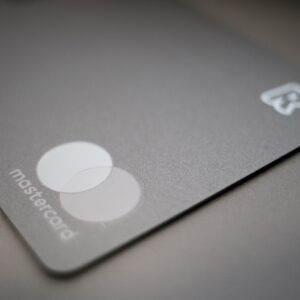
Barring a few changes — such as chip-and-pin technology, contactless payments — the standard mix of loyalty cards, credit and debit cards, and cash in a wallet is much the same as it was 20 years ago.
But there’s a big prize waiting for the first company to convince us to ditch all our metal and plastic for something more 21st century. Here’s what you need to know about the groups jostling for position in your back pocket.
1. The big three
A small group has taken the lead in digital payments online: Google, Amazon and PayPal. Now they are trying to build their businesses in the physical world. Google’s Wallet service lets users put cash on their phone to spend in-store as well as online. And, with near field communication technology, it turns a compatible Android phone into a contactless card.
2. Google Wallet’s real wallet
If your favorite coffee shop isn’t hooked in to Google’s system, the company has also just released a physical Wallet Card, which lets you spend your balance anywhere in the U.S. where Mastercard is accepted. It’s basically just another debit card, but hooked up to the Bank of Google.
3. The Coin card
The aim of the $100 Coin, launching in the U.S. this summer, is to allow one card to do the job of every other one in your pocket, from debit cards to supermarket loyalty cards. It scans the magnetic strip on the back of the cards, and then replicates the strip electronically on its own back.
With the click of a button, you can switch from paying with a debit card to paying with a credit card and back — and even swipe for loyalty points in between.
4. Square
Digital wallets have a chicken-and-egg problem: they’re useless to customers without shops that take them, and no shop will accept payment in them if their customers don’t use them.
Square, Twitter co-founder Jack Dorsey’s new company, provides small businesses with an appendage that plugs into the headphone jack of a mobile phone and allows merchants to swipe cards and take payments.
But Dorsey’s real goal is removing cards altogether. Every merchant using Square to take card payments can also take payments directly from the Square app on customers’ phones — and thanks to a high-profile deal with Starbucks, that’s now quite a few customers.
5. U.S.
Google’s Wallet Card, Coin and Square are unavailable outside the U.S. There are the standard commercial pressures to blame, plus some places, such as the U.K., have moved to a chip and pin system. It is significantly more secure than the magnetic stripes still used in the U.S., but also harder to program for. It’s doubtful that something like the Coin card could exist with chip and pin payments, for instance.
6. iZettle
Some companies are dealing with chip and pin. Stockholm’s iZettle lets stores use an iPhone or iPad to take credit card payments, but the more complex technology comes at a cost: whereas PayPal and Square offer free mag-stripe readers in the U.S., iZettle’s chip and pin reader costs almost Pounds 100 in Britain, as does PayPal’s competing hardware.
7. NFC payments
Mobile phones that can carry out contactless payments have been available in the UK since 2011, but the technology hasn’t taken off. Phones with the required technology are still quite rare.
And most of the services require you to set up a separate digital wallet, rather than linking directly to your bank account, adding an extra layer of bureaucracy between you and your money.
8. Horrible fragmentation
Every company has its own, non-transferrable, digital wallet app. In 2014 some of that fragmentation should end as Vodafone, EE and O2 form a mobile wallet service, “Weve.” But the days of digital wallets being as straightforward as credit cards seem a long way off.
9. Bitcoin
Despite news stories about bitcoin being illustrated with shiny metallic discs, bitcoins are simply chunks of data on a hard drive that can be bought with “real” money or them by getting a computer to chug through some complex maths.
Their fully digital nature gives them potential as an international currency, and allows users to transfer them between each other without having to go through banks.
10. The elephant in the room
Some suspect Apple has a plan up its sleeve: a combination of its vast horde of credit card data, Touch ID fingerprint scanners and new “iBeacon” technology for short-distance communications could create a fearsome competitor.













